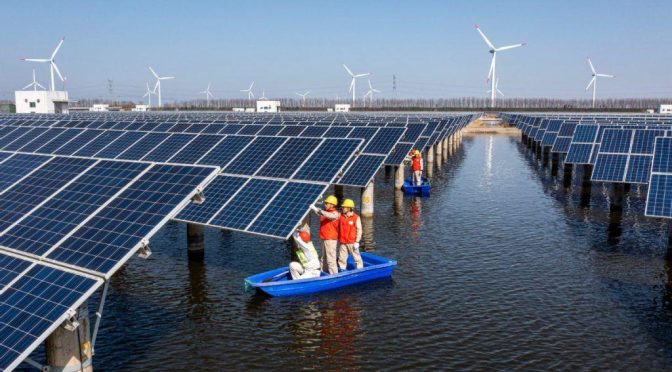In 2010 it took an average of a month to install one gigawatt of solar capacity. By 2015, this pace quickened to a week, and in 2023, it is expected to exceed one gigawatt per day.
- Solar energy now plays a significant role in global electricity production.
In the last decade, the global solar power landscape has transformed dramatically, according to a summary by Solcellskollen.
Looking back to 2010, it took an average of a month to install one gigawatt of solar capacity. By 2015, this pace quickened to a week, and in 2023, it is expected to exceed one gigawatt per day.
A 56% increase from 2022
Solar power surpassed wind energy in 2022, becoming the leading source of new electricity production globally in terms of both capacity and energy. Together with wind power, it accounted for over 80% of the added global capacity. According to BloombergNEF, the total solar installation for 2023 is projected to reach 392 gigawatts.
Between 2018 and 2022, the annual solar capacity growth averaged 18%. The year 2023 is expected to see a surge above 50%, potentially marking the highest annual increase in a decade, as reported by IEA-PVPS & BloombergNEF.
This expansion signifies that solar energy is expected to grow from generating an equivalent of 6.2% to about 8% of global electricity consumption in 2023. However, these figures vary, as it’s challenging to forecast the solar share in the electricity mix accurately. This variability is due to factors like annual variations in solar radiation and a significant portion of global solar production occurring within residential and commercial properties, where reliable statistics are more elusive.
Several European countries have seen substantial solar adoption
In Europe, solar power has become a significant part of the electricity system. While China leads in volume, several European countries have seen substantial solar adoption. For example, Malta and Spain, with up to 20% of their electricity consumption from solar energy, lead the way in Europe. Countries like the Netherlands, Germany, and Denmark follow closely, with 16%, 13%, and 10% solar contribution to their respective electricity mixes.
According to Solar Power Europe, the installed solar capacity in Europe has increased by approximately 120 gigawatts since 2020, indicating that about half of the current capacity in Europe was added in the last three years.
The International Energy Agency (IEA) sees solar power as a critical component in the climate transition. In its World Energy Outlook, IEA presents various scenarios for solar capacity growth based on technological developments and political ambitions. In all scenarios, solar power is the fastest-growing energy source up to 2030 and 2050. By 2030, the annual solar capacity addition is expected to average between 440 gigawatts in the most conservative scenario and up to 620 gigawatts in the most ambitious ones.
Over one-third of total emissions reductions by 2030
Solar power, along with wind energy and electric vehicles, is anticipated to contribute significantly to emissions reduction in the global energy sector. For instance, in the conservative scenario of IEA, solar power is projected to account for over one-third of total emissions reductions by 2030.
However, the rapid expansion of solar energy brings challenges, such as lengthy permit processes, grid connection issues, and the need for more flexible electricity systems. IEA highlights the importance of enhancing flexibility, including battery storage, demand response, hydropower, thermal storage, and other flexible power generation, to integrate a growing share of solar and wind energy into the grid.



